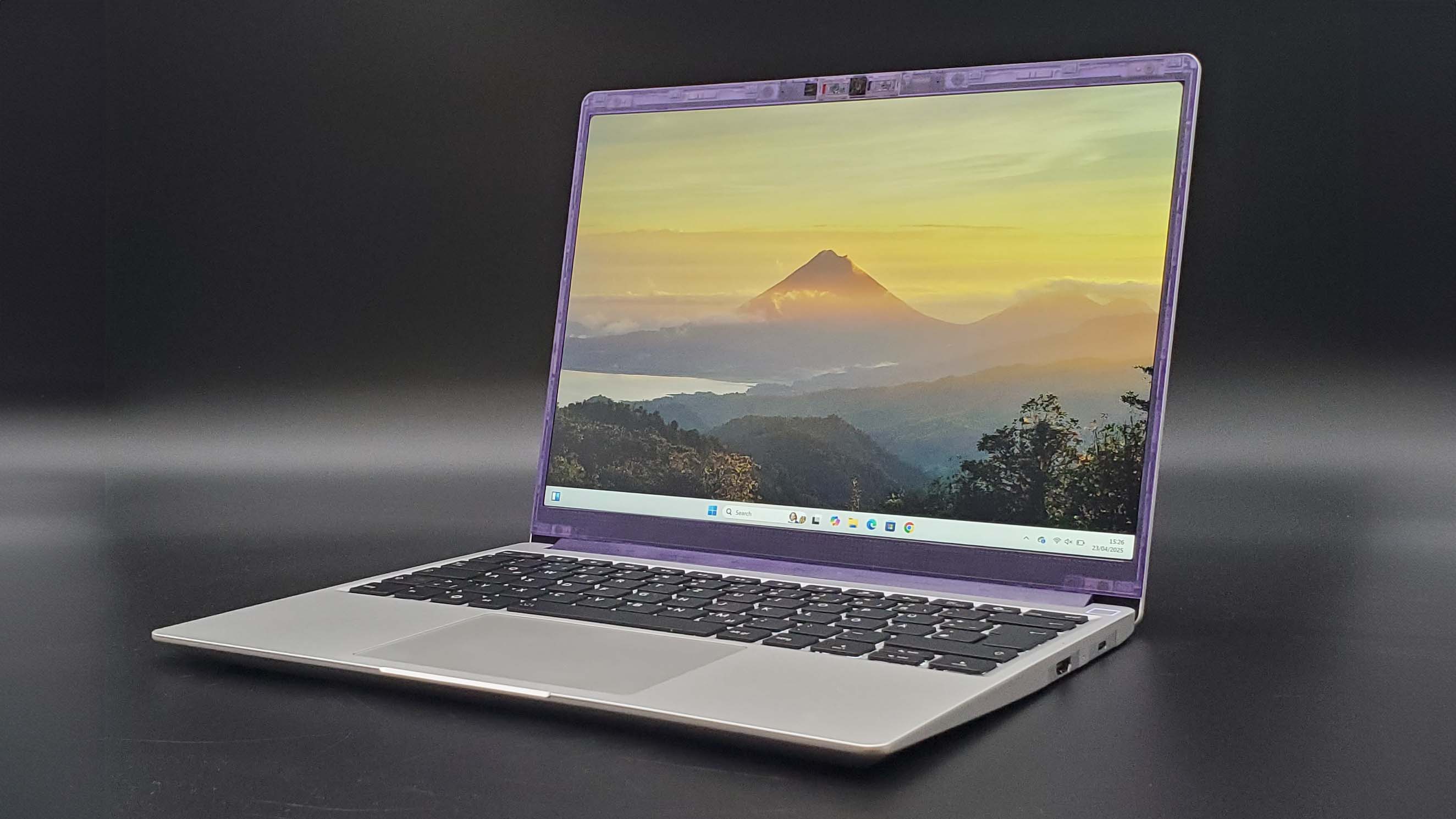You thought your keyboard was over the top: You can adjust the typing feel on the new ROG Azoth Extreme while enjoying its color OLED
I'm fearful of what the price will be.
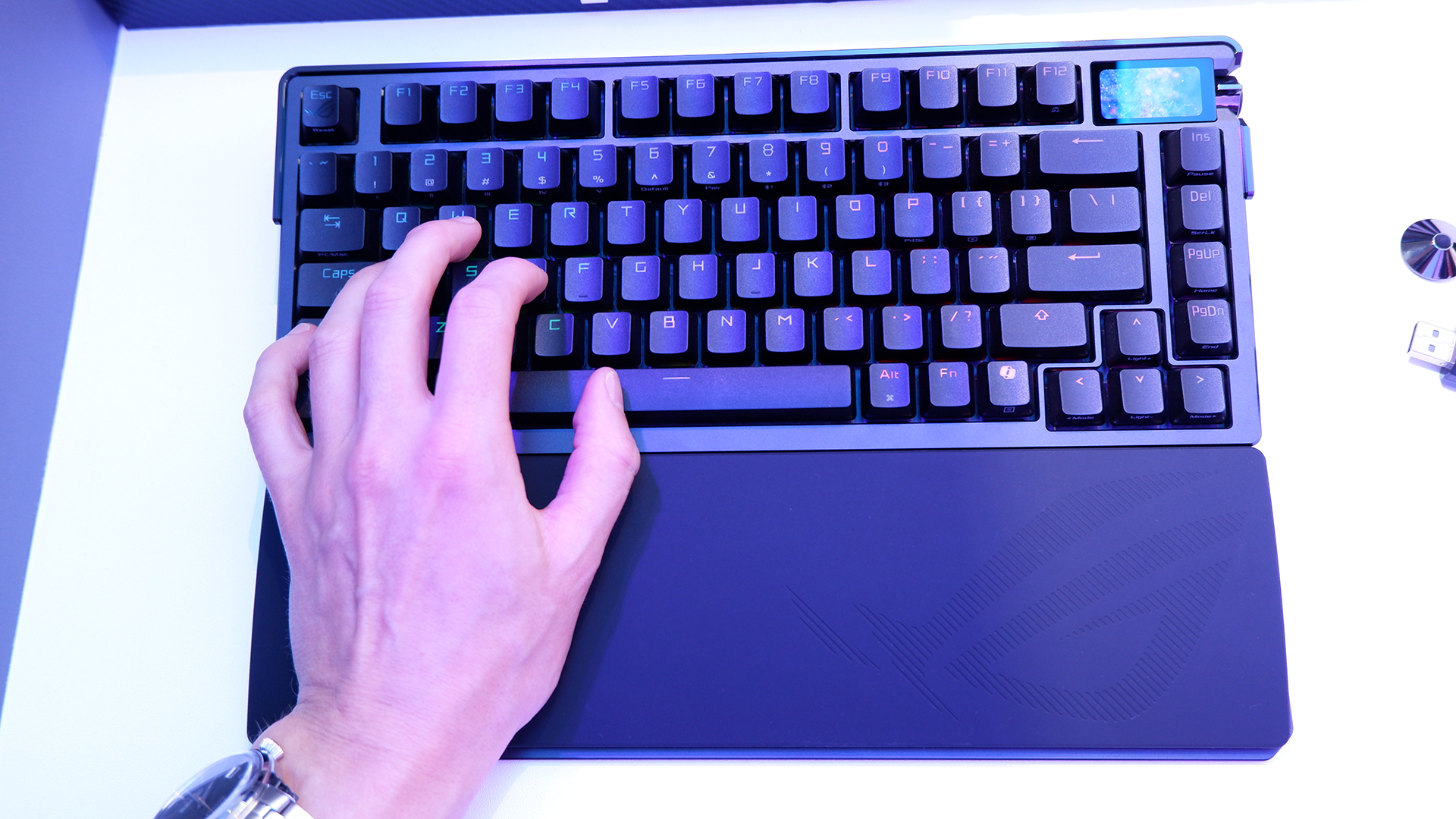
The ROG Azoth Extreme is a brand new wireless gaming keyboard with a whole lot of extra bits.
The most immediately noticeable extra is the OLED screen in the upper right corner. This full-colour panel may be limited in resolution, but it is a touchscreen—you swipe the screen and the animation changes. It looks surprisingly good in-person, and it's plenty responsive.
The Azoth Extreme is made up of an aluminium alloy surround, in which sits a carbon fibre top plate (there's carbon fibre on the new ROG Harpe Ace Extreme, too), a silicone pad, a Poron switch pad, and Poron dampening foam. All of which sits on metal leaf springs within the chassis.
"We chose carbon fibre for its metal like rigidity, providing a crispy typing feel while its versatility absorbs vibrations. Second, within the keyboard we have integrated metal leaf springs, to give the Azoth Extreme a more cushioned and pleasant typing feel," Eason Lee, Asus, says.
The idea is that all those layers combined make for seriously smooth operation—and I'm inclined to agree.
I've only tried the keyboard for a brief period at Asus HQ, though it was lovely to type on. I expect no less: we rate the original ROG Azoth as the best high-end gaming keyboard, and I use the ROG Strix Scope II 96 Wireless most days at home. The newer Azoth Extreme has a more pitchy clack than the Strix Scope, however.
That's perhaps because Asus has implemented a feature that really does feel extreme: the ability to switch between a soft and hard key press.
The biggest gaming news, reviews and hardware deals
Keep up to date with the most important stories and the best deals, as picked by the PC Gamer team.
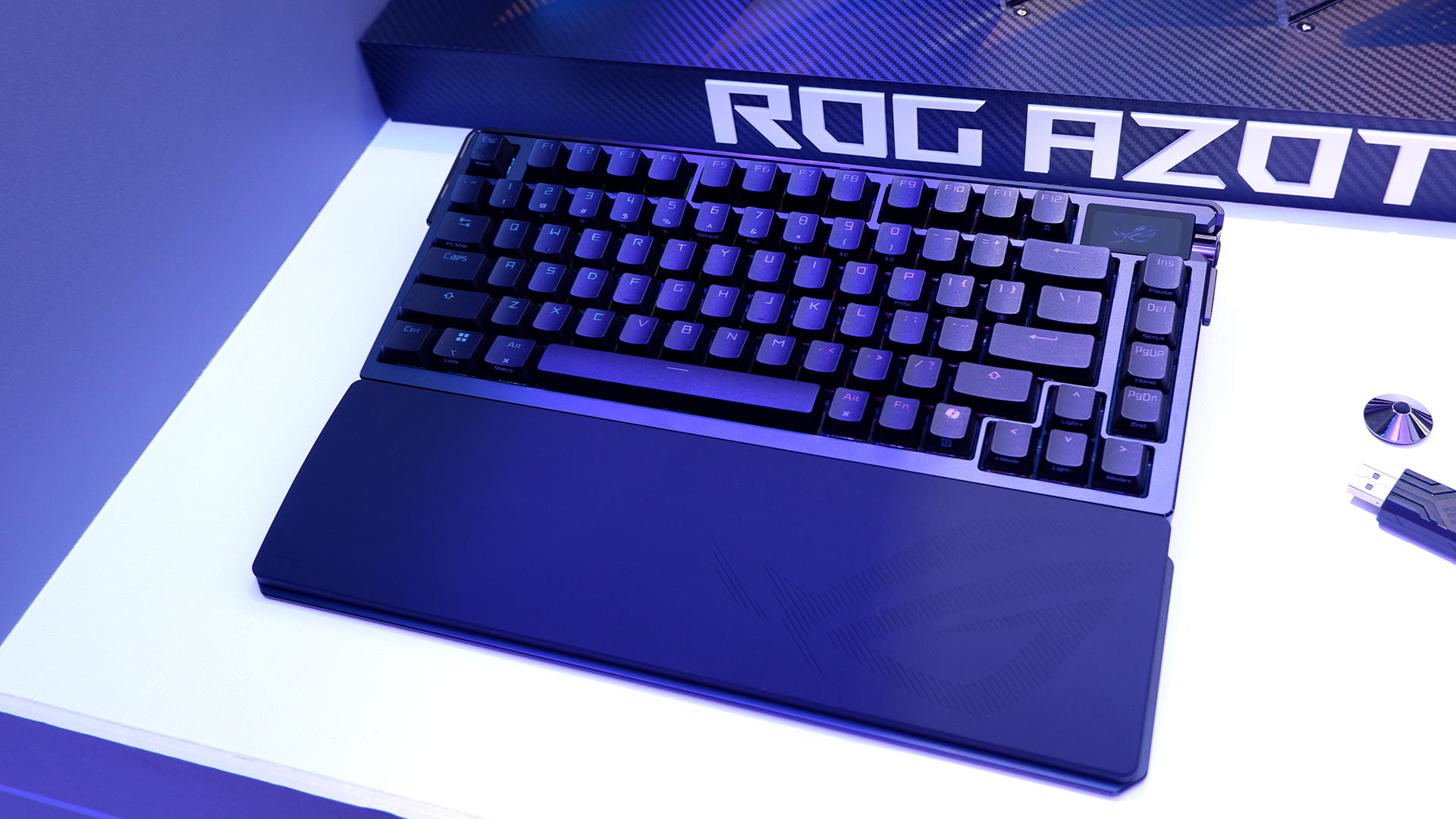
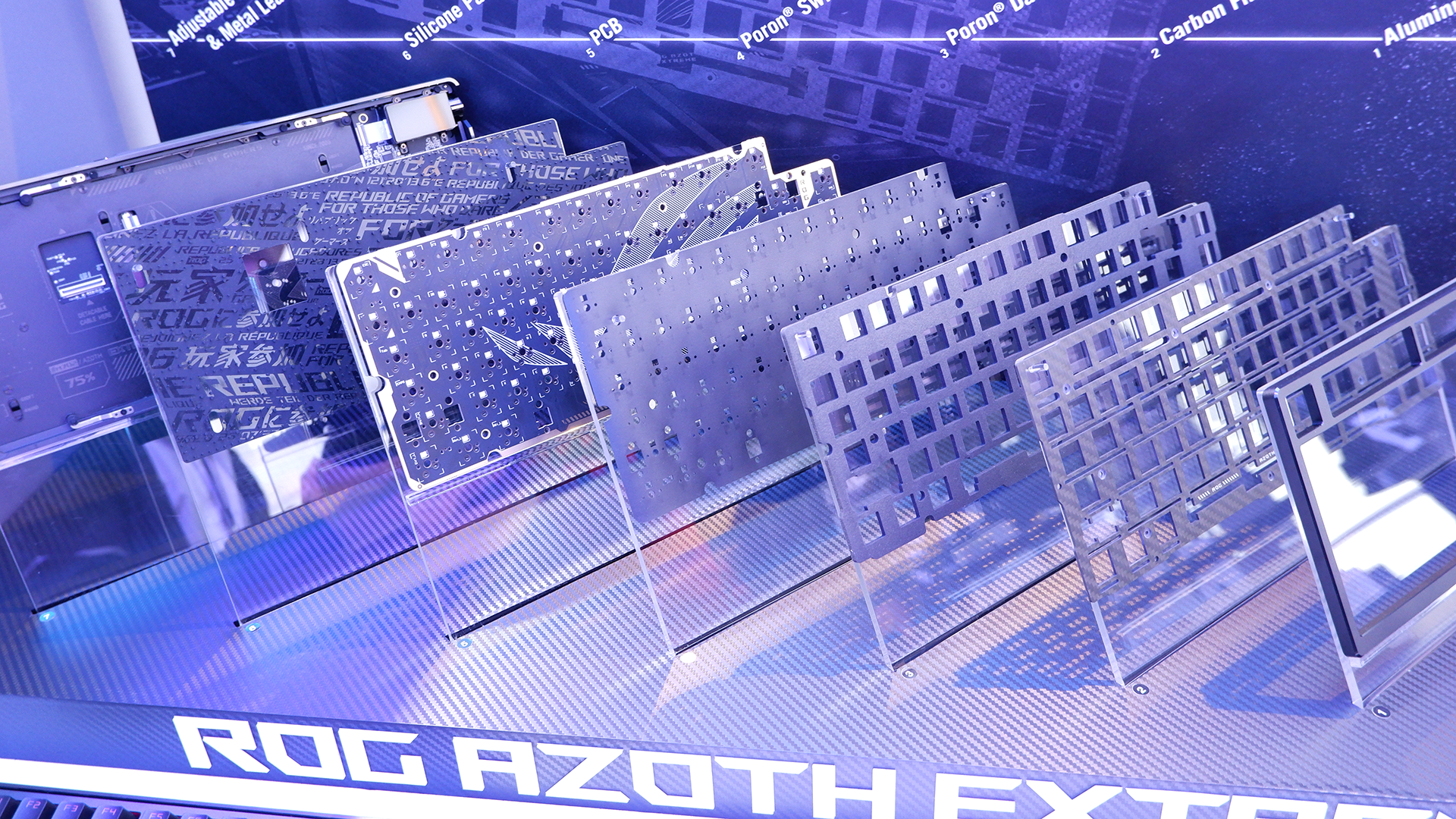

The ROG Azoth Extreme isn't the first keyboard to do this, nor is it even the first I've used. Topre have long offered the ability to change up actuation points on its weird but wonderful keyboards (my favourite keyboard maybe ever is the Realforce R2). However, you don't see it used very often, especially not in the gaming sphere.
That's probably because dual-option switches add cost, and complexity, to something most people just don't really think about all that often. On the Azoth Extreme the hard mode is for gaming and the soft mode for prolonged use typing. It's adjustable via a switch on the underside of the keyboard.
"Underneath the nameplate you can find a hidden panel that allows you to adjust the typing feel with ease. All you need to do is toggle the paddle and you can enjoy two different levels of softness."

I don't know about you, but I know myself well enough, and I'll definitely use the mode switching for about two weeks and then set it and forget it. But hey, the Azoth Extreme clearly spares no expense.
Ironically, the one thing the Azoth doesn't have in spades is keys—it's a 75% layout. Though that is more than most compact boards and importantly retains some handy switches, such as dedicated arrow keys.
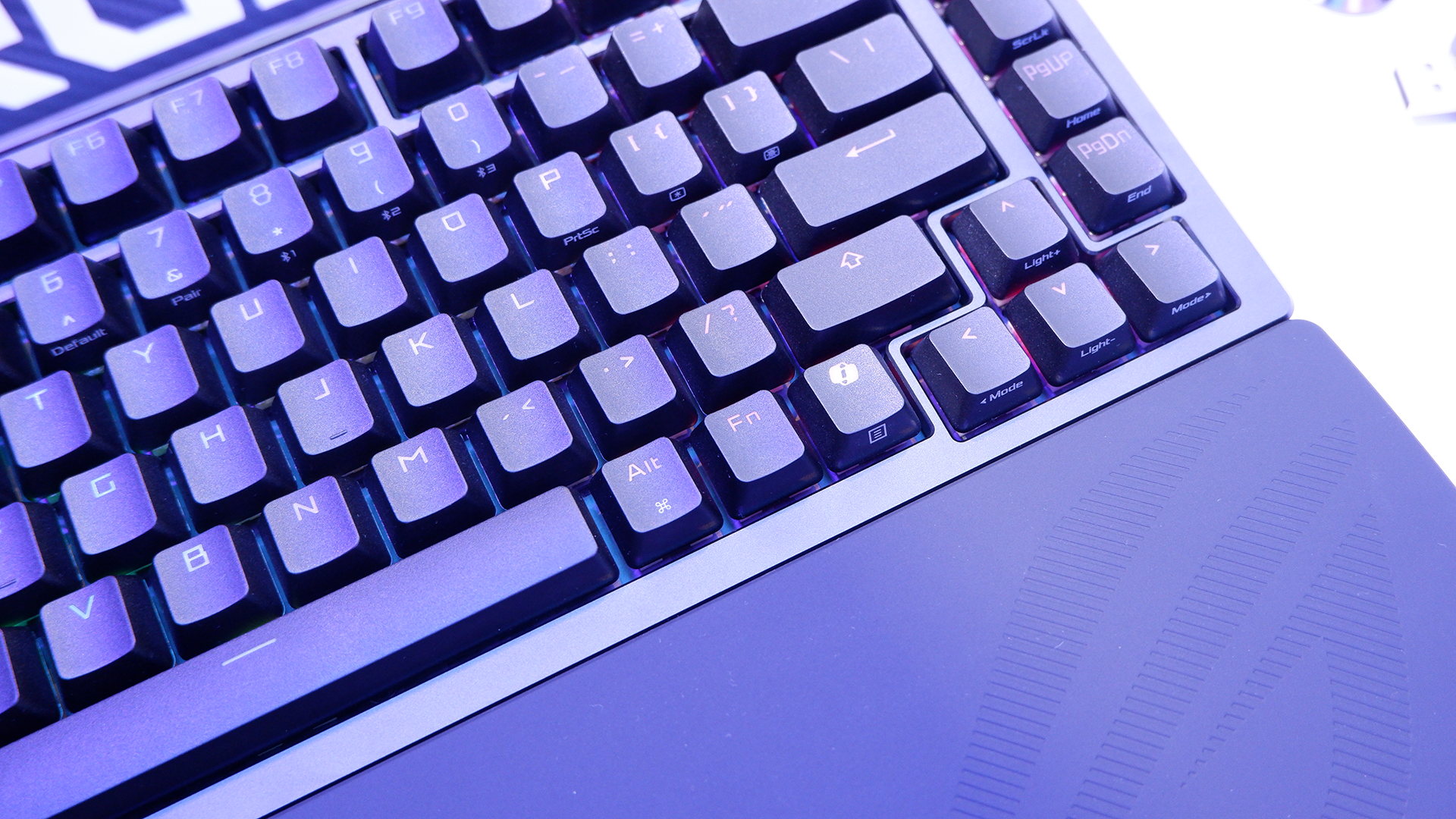
Oh, and there's a Copilot key for summoning Microsoft's Windows-based AI assistant. This addition I don't quite understand here—on a Copilot+ laptop I'd maybe see the inclusion, but you could use this keyboard on any manner of machine. A user might not even have Windows 11 installed, let alone Copilot running.
The one thing Asus hasn't told me is the Azoth Extreme's price tag—perhaps to save me the agony of knowing. It's going to be extremely high, as the standard ROG Azoth, already a premium gaming keyboard, is around $200 today. It was $250 at launch, however, and the Extreme model will surely be much more.
The Azoth Extreme will land sometime in Q3 2024, so we'll find out the damage then.
Catch up with Computex 2024: We're on the ground at Taiwan's biggest tech show to see what Nvidia, AMD, Intel, Asus, Gigabyte, MSI and more have to show.

Jacob earned his first byline writing for his own tech blog. From there, he graduated to professionally breaking things as hardware writer at PCGamesN, and would go on to run the team as hardware editor. He joined PC Gamer's top staff as senior hardware editor before becoming managing editor of the hardware team, and you'll now find him reporting on the latest developments in the technology and gaming industries and testing the newest PC components.


